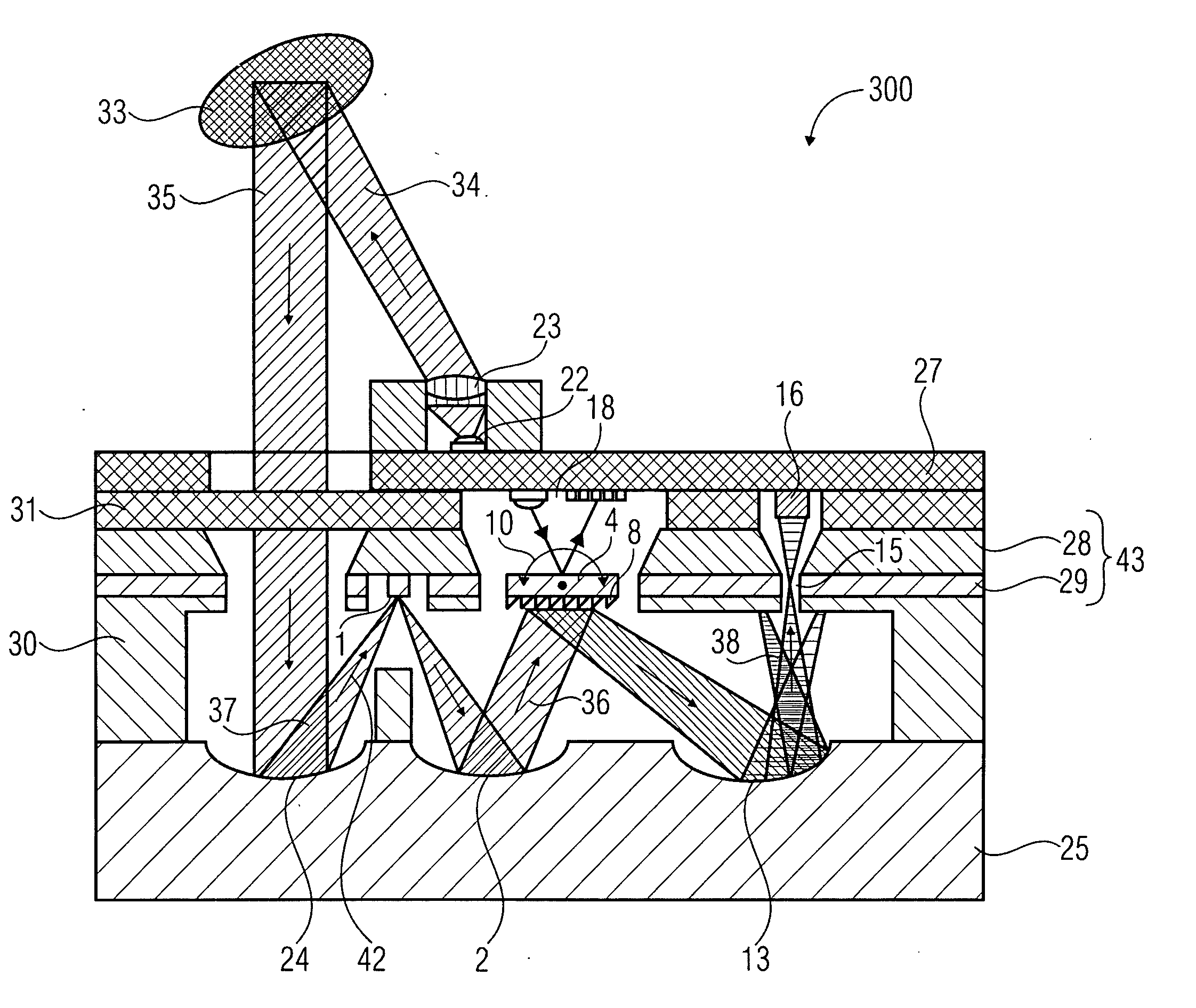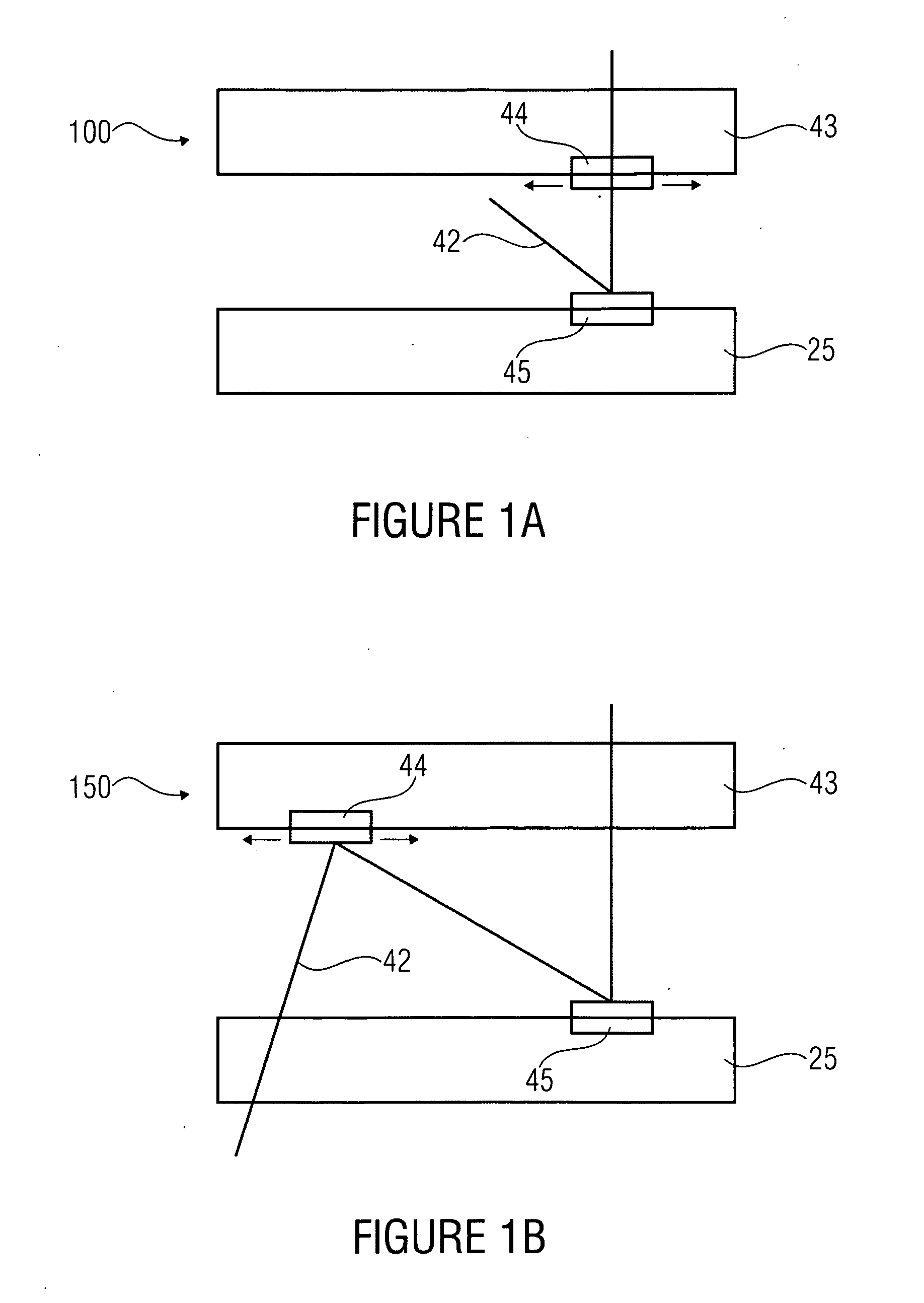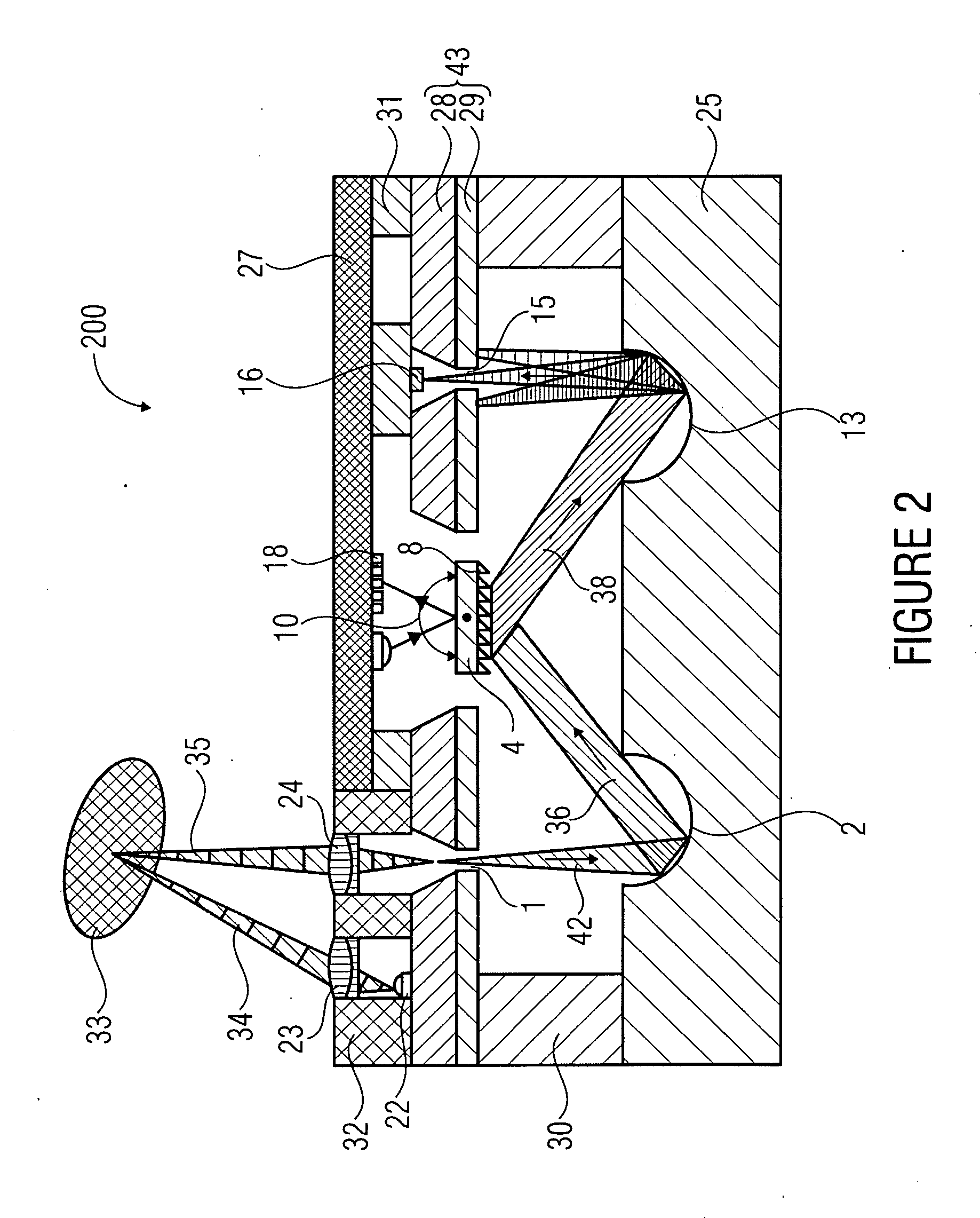Optical apparatus of a stacked design, and method of producing same
a technology of optical apparatus and stacked design, which is applied in the direction of electrical apparatus, instruments, and spectrum investigation, etc., can solve the problems of inability to fully exploit the advantages of said technology, the signal intensity or signal sensitivity is not fully realized, and the cost of such an operation is generally high, so as to reduce the level of the effect of minimizing scattered light and/or extraneous light and higher system yield
- Summary
- Abstract
- Description
- Claims
- Application Information
AI Technical Summary
Benefits of technology
Problems solved by technology
Method used
Image
Examples
Embodiment Construction
[0059]FIGS. 1A and 1B show schematic cross-sectional representations of an optical apparatus in accordance with embodiments of the invention. The optical apparatuses are designated by 100 and 150, respectively, in their entireties. The apparatuses, or the systems, are built in a stacked manner of a first substrate 25, also referred to as an optical substrate, and of a second substrate 43, also referred to as a micromechanical substrate, at least one optical functional element 45 being arranged in or on the optical substrate 25, and at least one movable micromechanical functional element 44 being arranged in or on the micromechanical substrate 43. The first substrate 25 and the second substrate 43 are connected to each other in a stacked manner such that a light path 42 exists which is convoluted between the first substrate 25 and the second substrate 43, at least one movable micromechanical functional element 44 and at least one optical functional element 45 being arranged in the li...
PUM
| Property | Measurement | Unit |
|---|---|---|
| distance | aaaaa | aaaaa |
| sizes | aaaaa | aaaaa |
| transmission | aaaaa | aaaaa |
Abstract
Description
Claims
Application Information
 Login to View More
Login to View More - R&D
- Intellectual Property
- Life Sciences
- Materials
- Tech Scout
- Unparalleled Data Quality
- Higher Quality Content
- 60% Fewer Hallucinations
Browse by: Latest US Patents, China's latest patents, Technical Efficacy Thesaurus, Application Domain, Technology Topic, Popular Technical Reports.
© 2025 PatSnap. All rights reserved.Legal|Privacy policy|Modern Slavery Act Transparency Statement|Sitemap|About US| Contact US: help@patsnap.com



